Parts
BMX Handlebars: Cruiser, Alloy, Triple Taper
BMX bicycles are uniquely designed for off-road racing and stunts. The components of a BMX bike are vital to its performance and handling. One of the key components that plays a pivotal role in influencing a rider’s control and stability is the handlebar. In this comprehensive guide, HookBike’s will delve deep into the world of BMX handlebars, specifically focusing on Cruiser, Alloy, and Triple Taper varieties.
What are BMX handlebars?
BMX handlebars are a specific type of handlebar designed for BMX (Bicycle Motocross) bikes, which are used for various disciplines including street riding, dirt jumping, freestyle, and BMX racing. Here’s an overview of BMX handlebars:
Design and Structure
- Straight Crossbar: Unlike the looped design of cruiser handlebars, BMX handlebars typically have a straight crossbar that runs parallel to the ground.
- Width: BMX handlebars are generally wider than those found on road or mountain bikes. This width provides riders with better control and leverage, especially when performing tricks or jumps.
- Rise: The rise refers to how high the handlebars are from the stem’s attachment point. BMX handlebars come in various rises, and the choice often depends on the rider’s preference and the type of riding they’re doing.

Materials
BMX handlebars are usually made of steel or chromoly (a blend of chromium and molybdenum). Chromoly is the preferred material for many because of its strength-to-weight ratio, making it durable yet relatively lightweight.
Grip and Control
The design of BMX handlebars offers riders a lot of leverage, crucial for performing tricks and maintaining control during aggressive maneuvers. The grips on BMX handlebars are typically longer and provide a secure grip to ensure the rider’s hands don’t slip off during tricks.
Types of BMX Handlebars
While the general structure remains consistent, there are subtle differences in BMX handlebars based on the specific BMX discipline:
- Racing Handlebars: These are typically narrower and lighter, optimized for speed rather than tricks.
- Freestyle Handlebars: Wider and more robust, these handlebars are built to withstand the stresses of jumps, tricks, and landings.
Attachments
BMX handlebars can be equipped with various attachments and accessories, including brake levers (especially for racing or park riding), bar ends to protect the grips and rider, and pads on the crossbar for added safety.
BMX handlebars are essential components of BMX bikes, designed specifically for the demands of BMX riding. Whether racing on a track, performing aerial tricks in a skatepark, or jumping off dirt ramps, these handlebars provide the necessary control, durability, and performance needed for the sport.
See more: Butterfly Handlebars
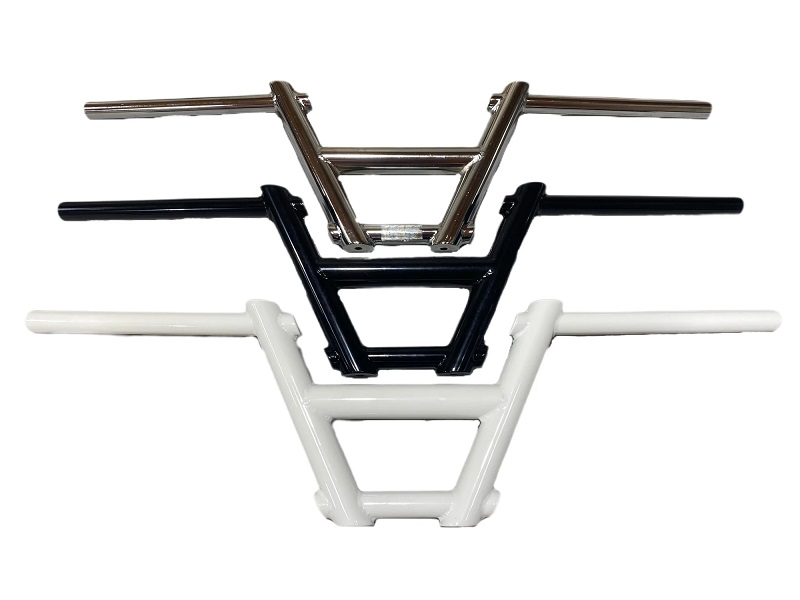
Cruiser Handlebars: The Classic Choice
What are Cruiser Handlebars?
Cruiser handlebars are a popular choice among BMX riders, primarily for their wide grip and relaxed riding stance. Typically curved upwards, they allow the rider to sit more upright, offering better visibility and comfort.
Benefits of Cruiser Handlebars:
- Enhanced Comfort: The ergonomic design ensures that riders do not hunch, reducing strain on the back and shoulders.
- Improved Control: The wide grip offers better leverage, making it easier to steer and control the bike.
- Aesthetic Appeal: With their vintage-inspired design, cruiser handlebars add a touch of retro charm to any BMX bike.
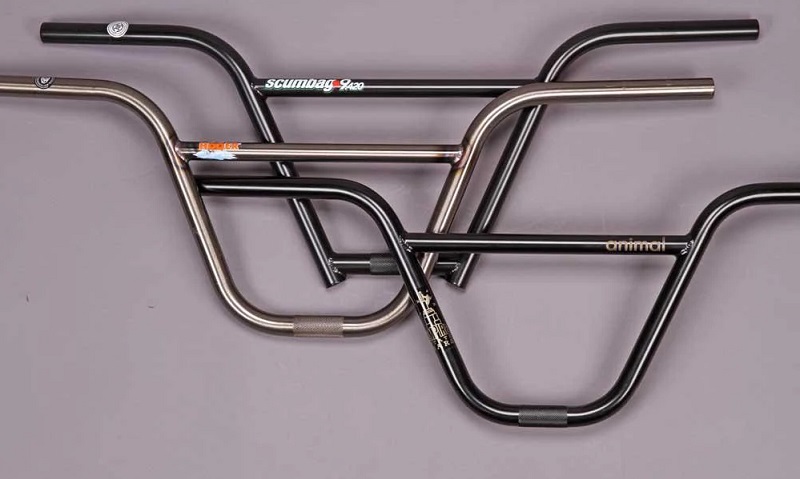
Alloy Handlebars: Lightweight and Durable
Understanding Alloy Handlebars:
Alloy handlebars are made using a blend of metals, often including aluminum. This combination results in a lightweight yet sturdy handlebar, which is preferred by many competitive BMX riders.
Advantages of Alloy Handlebars:
- Weight Reduction: Being lightweight, alloy handlebars reduce the overall weight of the bike, ensuring quicker maneuverability.
- Corrosion Resistance: The metals used in alloy handlebars are less prone to rust, guaranteeing longevity.
- High Strength: Despite being light, alloy handlebars are strong and can withstand the rough and tumble of BMX riding.
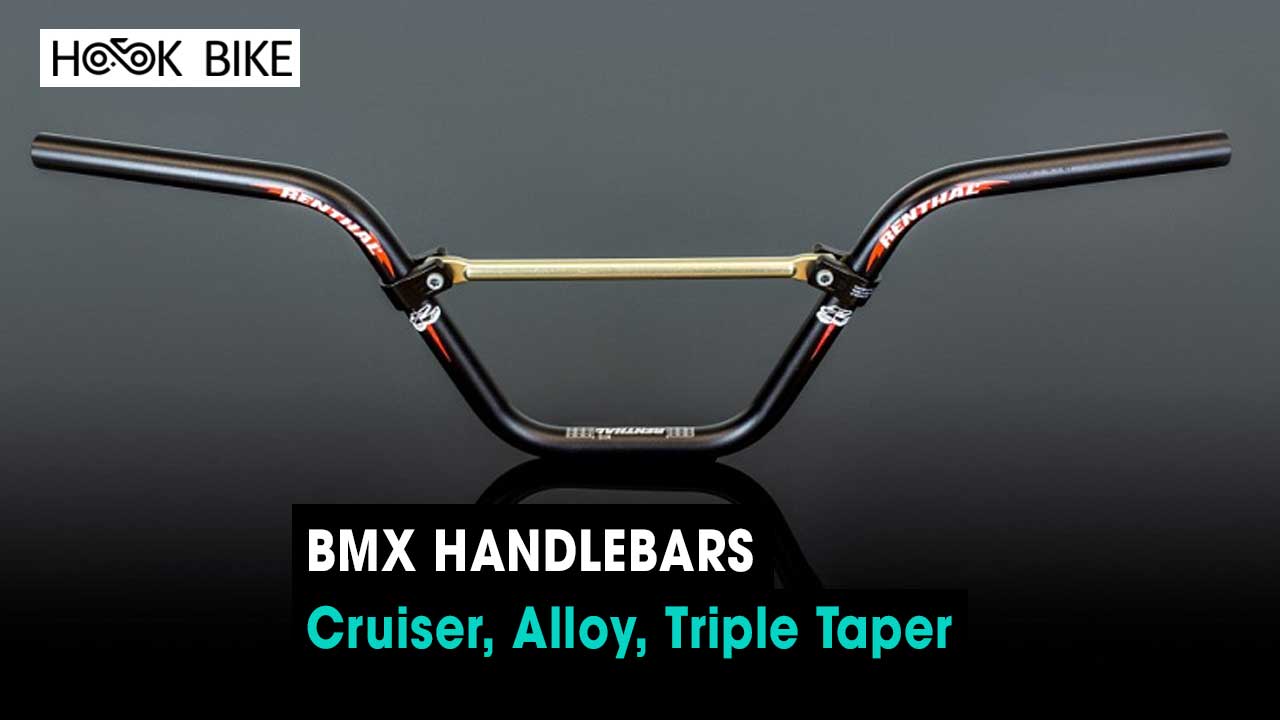
Triple Taper Handlebars: The Next Level in BMX Riding
Delving into Triple Taper Handlebars:
Triple Taper handlebars are known for their unique design, where the tubing tapers at three different points. This design not only enhances the look of the handlebar but also provides structural advantages.
Reasons to Opt for Triple Taper Handlebars:
- Superior Strength: The triple tapering increases the strength of the handlebar, making it ideal for BMX stunts and tricks.
- Optimal Flex: The design offers just the right amount of flex, allowing riders to execute tight turns with ease.
- Distinctive Look: For riders looking to stand out, the unique design of triple taper handlebars adds a touch of sophistication to their BMX bike.
See more: Flat Handlebars
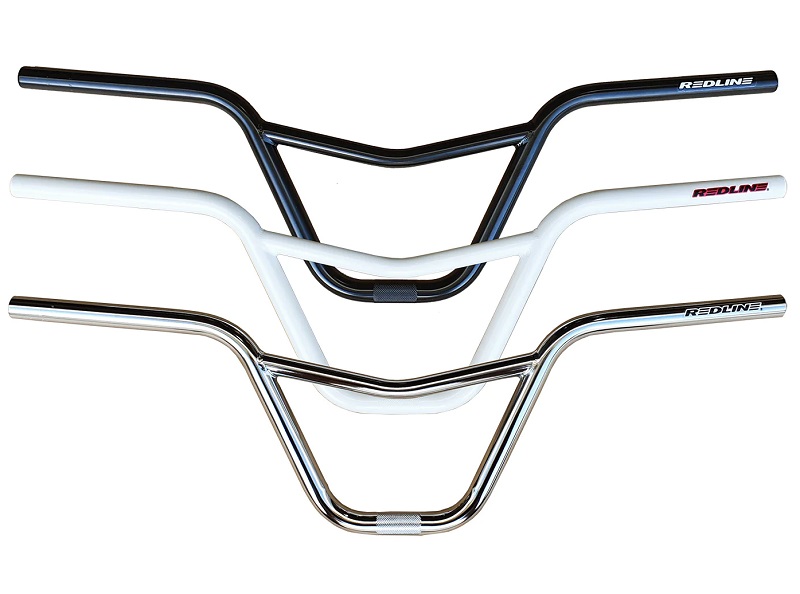
The Importance of Choosing the Right BMX Handlebar
Choosing the right BMX handlebar is crucial for riders, not just for aesthetic reasons but for functionality, safety, and performance. Here’s a breakdown of why making the right choice is so important:
Performance
- Control: The width and rise of a BMX handlebar can significantly impact how much control a rider has. Wider bars offer more leverage, which is particularly useful for tricks and jumps.
- Maneuverability: Different handlebar shapes and sizes allow for varying degrees of movement. For instance, a narrower bar might be more agile, which could be advantageous in BMX racing.
Comfort
- Ergonomics: A handlebar that suits the rider’s height and arm length can prevent strain on the back, shoulders, and wrists. An improperly sized handlebar can lead to discomfort or even long-term injuries.
- Ride Preference: Some riders might prefer a more upright position (higher rise), while others might want a more aggressive stance (lower rise). Choosing the right handlebar ensures the rider’s comfort based on their style.
Safety
- Strength and Durability: Especially in freestyle BMX, handlebars undergo a lot of stress. Choosing a high-quality handlebar made of strong materials like chromoly can prevent accidents caused by equipment failure.
- Grip: The right handlebar allows for optimal hand placement, ensuring that the rider’s hands don’t slip off, especially during tricks.
Versatility
Different disciplines within BMX have different requirements. For instance:
- BMX Racing: A narrower and lighter handlebar is beneficial for speed and quick maneuvering.
- Street and Park Riding: Wider handlebars offer better control and stability, essential for tricks.
Confidence Boost
Riding on a handlebar that feels right can greatly boost a rider’s confidence. This confidence translates into better performance, as the rider can fully concentrate on their skills rather than adjusting to ill-fitting equipment.
See more: Aero Handlebars
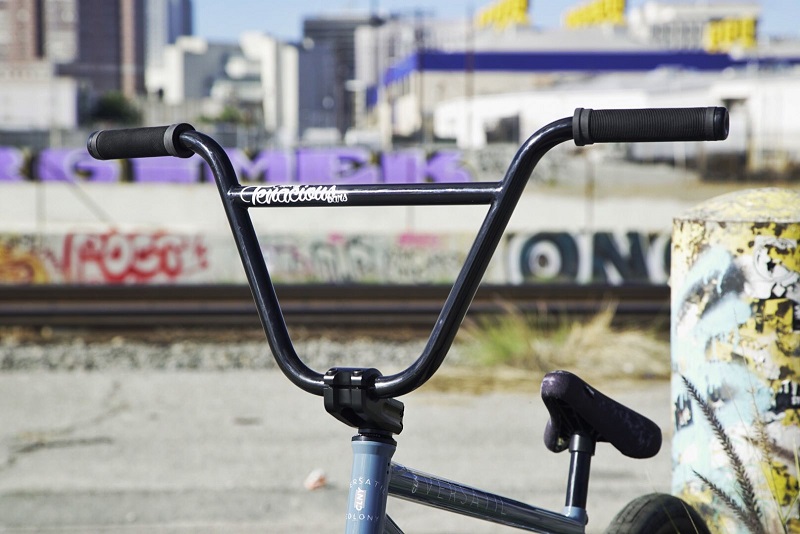
Adaptability
As riders progress and evolve in their BMX journey, their preferences might change. What worked initially might not be ideal later on. Recognizing when to switch to a different handlebar type can enhance one’s adaptability to different BMX disciplines.
Aesthetic and Personal Expression
While functionality is paramount, aesthetics matter too. Riders often see their bikes as extensions of themselves. The right handlebar can complement the overall look of the bike, reflecting the rider’s personal style.
Choosing the right BMX handlebar goes beyond just picking one that looks good. It plays a fundamental role in a rider’s performance, safety, and overall riding experience. By understanding their preferences, riding style, and the demands of their BMX discipline, riders can make an informed decision that benefits them in the long run.
Conclusion: Making the Right Choice
When it comes to BMX handlebars, there’s no one-size-fits-all. Whether you opt for Cruiser, Alloy, or Triple Taper handlebars, the key is to understand your riding style and needs. By making an informed decision, you can enhance your BMX riding experience, ensuring better performance, safety, and enjoyment on the track and off.

